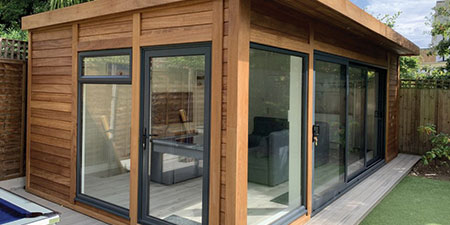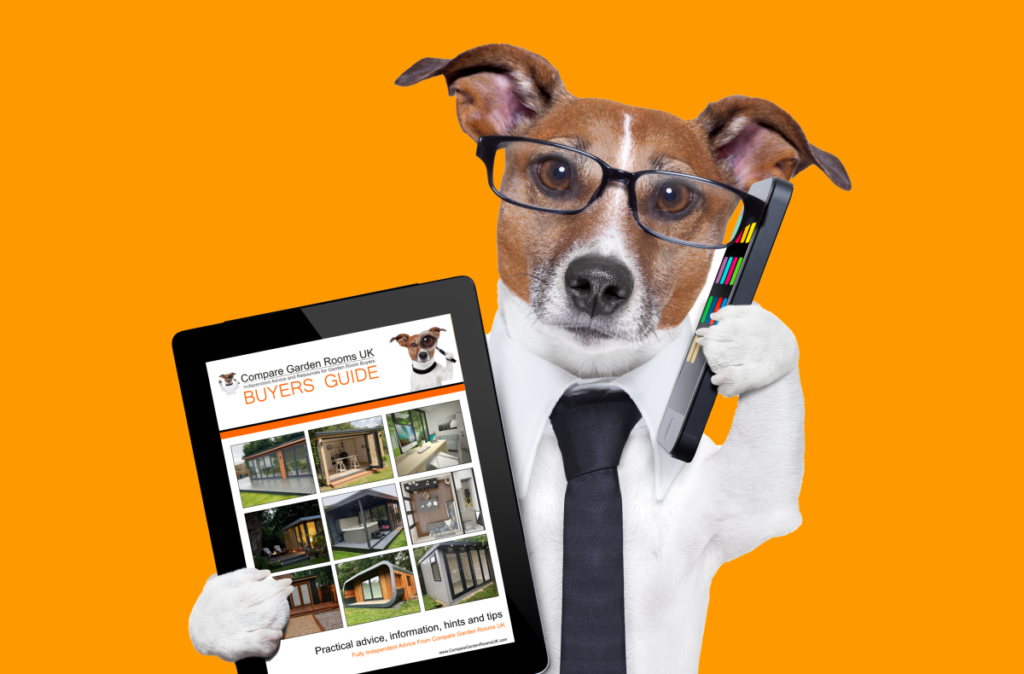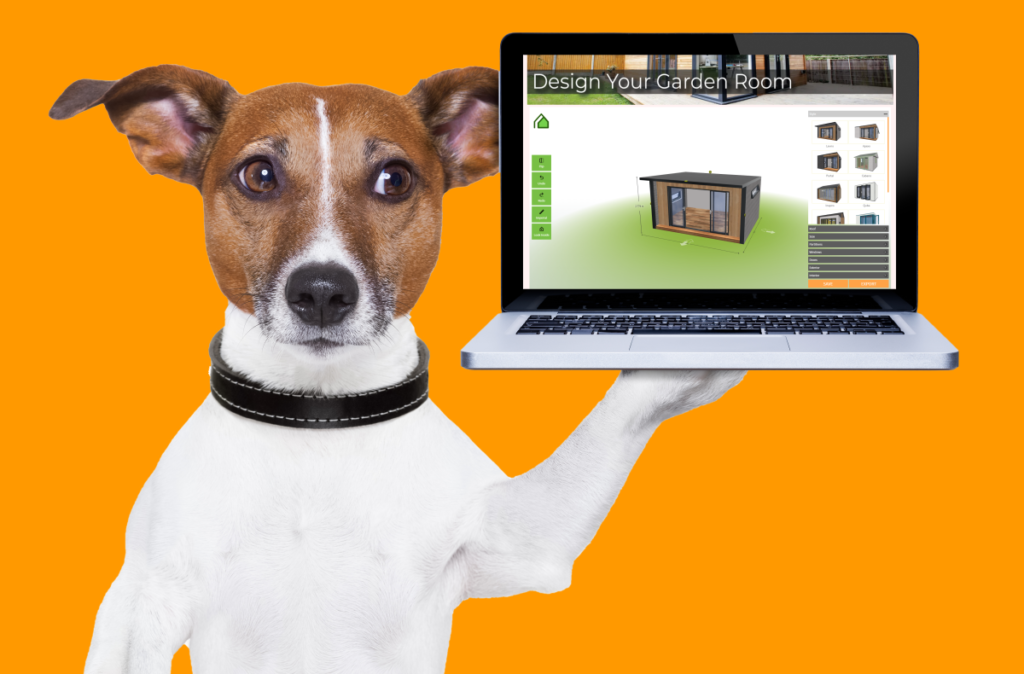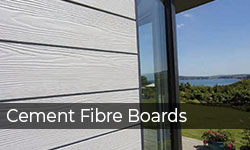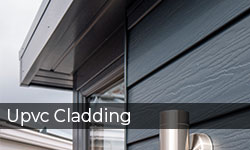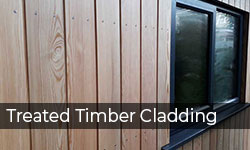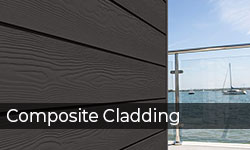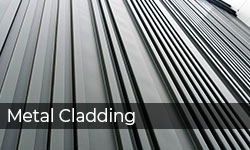
Treated Timber Cladding
Treated Timber Cladding
Timber cladding provides the economic, durable and environmentally friendly solution for garden rooms. With many options to choose from Siberian Larch, Western Red Cedar, Thermowood, Lignia cladding provide you with a choice of visual appearances to suit any garden room project.
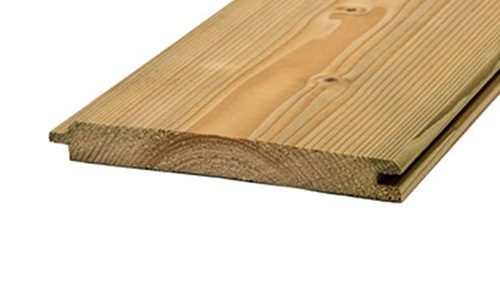
What is Timber Cladding?
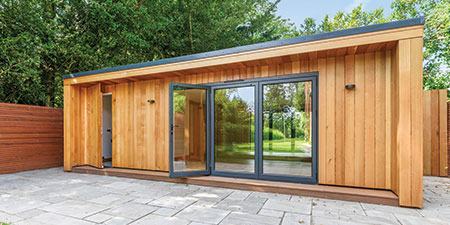
Timber cladding is a type of cladding that typically includes boards of timber. It is installed on the exterior of a garden room and may be used for the entire exterior, for specific portions, or in combination with other exterior claddings.
Timber cladding typically includes boards of timber. It is installed on the exterior of a garden room and may be used for the entire exterior, for specific portions, or in combination with other exterior claddings. Timber is primarily used in new construction and renovations in place of more traditional wood types such as plywood, and plywood. Timber cladding is a type of exterior cladding for buildings that adhere to natural and sustainable architectural principals. Timber cladding is most commonly used on new construction, but can also be used on old construction. Timber cladding can be made from any type of wood, but the most common woods are cedar, Western red cedar, and Douglas fir. Timber cladding is a superb choice for both commercial and residential property. A particular advantage of timber cladding is that it is a natural material, and is created from sustainable sources. The growth of timber cladding stems from a new passion for a natural lifestyle, a desire for the authentic, and for a sense of place. Timber cladding is available as either a board or a panel, and can be a solid board or an engineered board.
Treated and Untreated Cladding
The difference between the price of treated and untreated timber is a big deal. Untreated timber is cheaper, but with constant exposure to water it is likely to rot. This can mean that timber’s lifespan may be only five years in some areas. Treated timber lasts much longer, and can last up to 6-7 years in some cases. Growth rings are much wider and the timber is denser, meaning it will last longer. Untreated timber will degrade in a year or two because of the moisture it absorbs.
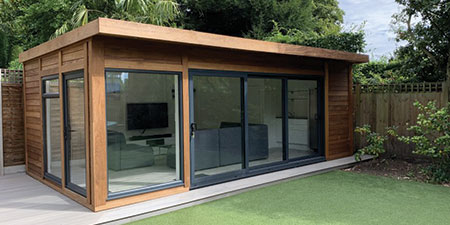
What Is The Best Timber For Exterior Cladding?
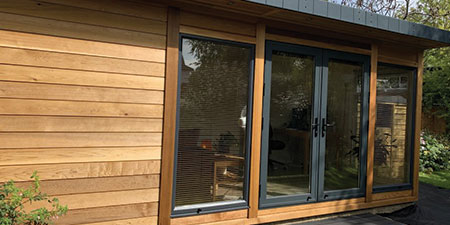
Wood is a very practical and attractive material for exterior cladding. There are many styles of wood, such as cedar, pine, poplar, and cypress. Each offers their own unique characteristics and benefits.
For example, cedar, pine or cypress can offer the best natural resistance against insects and rot. While poplar, which is hard, is often used in areas that are more prone to extreme cold weather. Exterior timber cladding must not only look good, but it must also be dimensionally stable and naturally durable. A good exterior cladding timber should be able to withstand all the severe seasons throw at it, including sun, rain, wind, and snow, as well as being resistant to insect and fungal assault. Softwoods are the most popular choice for exterior wood cladding since they perform well at a low cost, but there are some beautiful hardwoods that work well as well. Here are some of the greatest forms of wood cladding to consider whether designing an eye-catching business project or undertaking some home improvement.
Some Of The Best Choices For Timber Cladding
Western Red Cedar
Western Red Cedar a highly durable softwood with a beautiful, warm reddish-brown tint. has become a wildly popular cladding material in recent years. Many people believe it is the best species for cladding. This resinous species naturally repels all outdoor evils since it is lightweight stable, inexpensive weather resistant, and has excellent workability and nailing capabilities. Whether you’re cladding a house or the exterior of a large real estate property, Western Red Cedar will not disappoint. Western Red Cedar colour varies from reddish to pinkish brown with a darker red/brown stripe. Straight grain with a medium-to-coarse texture and not resistance is extremely good. It has Excellent machining workability qualities easily accepts screws and nails.
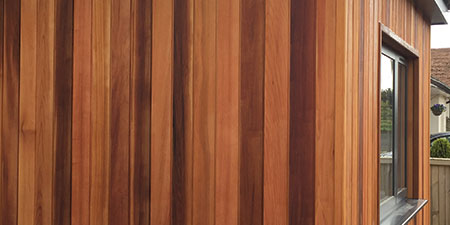
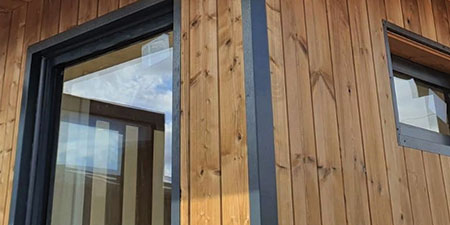
ThermoWood
Thermowood blends stunning brown tones with exceptional natural durability if you’re looking for a premium timber cladding that’s a little darker. This wood is slightly denser than Western Red Cedar but not as dense as Siberian Larch. As a medium density thermally modified softwood pine this one-of-a-kind product provides stability less shrinkage, movement (swelling), cupping and distortion. Thermowood, which comes in a variety of profiles is also resistant to screws and nails. The grain is often straight, Texture ranges from medium to fine. The colour is a rich brown tone that runs throughout. Moderate rot resistance and excellent machining workability qualities accepts screws and nails easily.
European Oak
Of all the hardwoods cladding, European Oak is the most affordable, but many people believe it to be the best cladding. This species has a warm brown color that will blend well with almost any exterior tint. This wood is extremely resistant to rot and decay and can be cut and used for indoor projects where rot won’t be an issue. European Oak becomes much darker as it ages, with some forms turning a gorgeous charcoal black. Natural European Oak features a reddish colouring. This timber cladding is hard, dense, and heavy. This species releases a lot of sap, which contains tannin-heavy chemicals. This makes the wood naturally resistant to rot and decay. European Oak has excellent nailing and screwing capabilities. European Oak features interlocking grains that are straight or slightly wavy, with a coarse texture that is easy to work with tools.
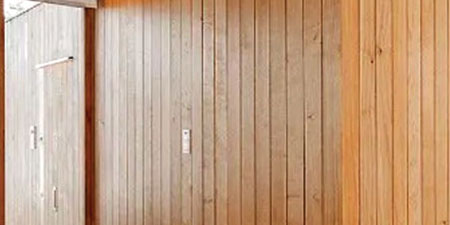
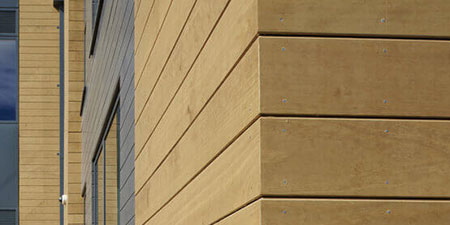
Accoya Wood
Accoya wood is a fantastic alternate to teakwood. This premium timber cladding is resistant to decay and insects, and has excellent durability. It also resists warping, shrinking, and rotting, making it one of the most stable exotic hardwoods in the world today. Oak trees that have been chemically-modified into Accoya wood feature a rich brown tone with unique hints of a red or purple coloring.
Siberian Larch
Siberian Larch is a fantastic alternative to Canadian Hemlock, and is also an affordable choice for cladding. This exotic hardwood is extremely resistant to rot and decay, while remaining lightweight, strong, and naturally resistant to warping. Once grown in Scandinavia, Siberian Larch has become very popular due its exceptional durability. This species features a reddish-brown colour that matches beautifully with the exterior of a building or property.
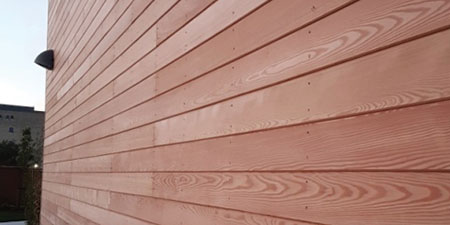
Advantages of Treated Timber Cladding
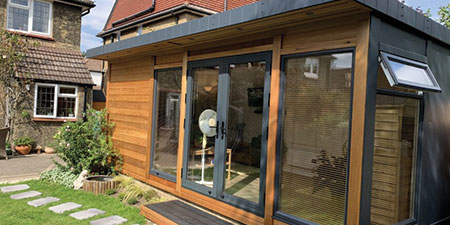
1. Timber Cladding Acts as Insulation
Timber cladding is effective for both heat and sound insulation, trapping in heat and ensuring sound does not escape. Better at retaining heat than concrete, steel, and aluminum, timber cladding is both functionally and aesthetically ideal for buildings:
Effective insulation from timber cladding and shingles reduces the reliance on heating and cooling systems in a building, promoting environmentally friendly energy usage.
2. Timber Cladding is Sustainable
Timber Cladding is a highly sustainable building material, taking into account that it can be made using principally renewable plant and animal materials While many modem building materials are manufactured from fossil fuels such as petroleum or coal, timber cladding is typically sourced almost entirely from these sources.
3. Timber Cladding helps to Regulate Temperature
Timber cladding produces an optimal thermal envelope in a building which is tight-fitting. yet allows for the maximum amount of natural light. The addition of thermal mass, in the form of timber cladding and insulation, greatly reduces the need for artificial climate control
4. Timber Cladding helps to Reduce Maintenance Costs
The maintenance costs associated with timber cladding is limited to cleaning and repainting as needed. The fibres in timber have a nature that repels dust and dirt, facilitating easy cleaning of wood surfaces.
Disadvantages of Treated Timber Cladding
1. Timber cladding can be relatively expensive.
Timber cladding can be relatively expensive if compared with other types of wall cladding, but when considering its longevity, it’s worth the initial investment.
2. Timber Cladding adds weight to building materials.
The weight of timber cladding isn’t an issue for conventional homes and apartment buildings, but it is a concern for high-rise buildings and other tall structures where weight can be a prohibitive factor in the construction process;
3. Timber cladding is susceptible to decay in wet areas.
Timber cladding is susceptible to decay from exposure to water over long periods of time The rate of decay depends on the type of timber used and the climate it’s exposed to.
4. Timber Cladding can be difficult to install.
Timber cladding is more difficult to install than other types of walls cladding as it requires a greater degree of skill and expertise, as well as special tools such as hammer-drill.
